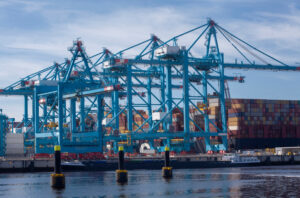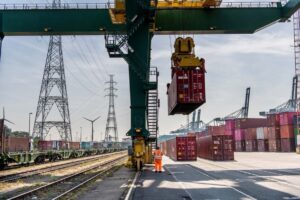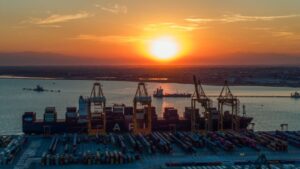Global container lines are having to be much more creative in where they deploy smaller vessels, as the pace for megaship ordering of 18,000 TEU and above continues at rapid pace, according to the latest container insight report from Drewry Shipping Consultants.
China COSCO, shares of which are still suspended from trading amid merger talks with China Shipping, has confirmed the much-anticipated $1.5 billion order of eleven 19,000 TEU ships from four different Chinese shipyards for delivery in 2018.
The average price for each ship comes in at US$137.4 million, which represents a significant discount of around $10-20 million paid by other lines for similar-sized leviathans, a measure of the Chinese shipbuilding industry’s need for new orders.
To give a sense of the newbuild price deflation, Maersk’s 18,000 TEU Triple-E ships, ordered in February, 2011 cost $190 million apiece.
Cosco’s orders mean that there are now nine carriers who either have ships of this size currently in their fleet or on order. More are expected to follow as CSCL is reportedly on the verge of ordering 11 more ULCVs, while Japanese shipyard Imabari has also reportedly received an order for four 20,000 TEU units with an as yet unnamed owner.
The 2M alliance had previously announced they are dispensing with their AE9/Condor service that uses 10 ships averaging 10,300 TEU. It is not yet clear what will happen to the 22 ships that are being displaced by 2M and O3, although Maersk’s release suggests the loop could still be reactivated on-demand.
The inflexibility of the ULCVs that can’t operate in any other trade besides the Asia-Europe lane makes it very hard for carriers to react to fluctuating demand and juggle ships accordingly.
All of the 10,000 and above TEU newbuilds delivered in 2015 to the end of August have been deployed in Asia-Europe, but it’s where carriers are putting the ships of between 8,000-10,000 TEU that reveals how they are trying to spread the burden of the new capacity as thinly as possible to avoid contaminating too many other trades.
Drewry believe it is a delicate balancing act, and one that carriers cannot win all of the time, but by distributing the new ships widely they give themselves the chance of maintaining some level of balance. However, the equation is unsolvable as there is simply not enough cargo to fill all of the ships.
While the bigger ships will always have some form of cost advantage the primary economies of scale argument is being diminished somewhat by the falling price of marine fuel. Drewry’s research shows that the 18k saving versus 14k has reduced from $76 per slot at the June 2014 peak to just $38 per slot based on the IFO/MDO prices at Singapore at the start of September.
Drewry View: Carriers are fearful of being left behind in the race for ULCVs but while they will always retain a competitive advantage (now diminishing) the value of having a smaller, but more flexible fleet in slowing market should not be overlooked.








